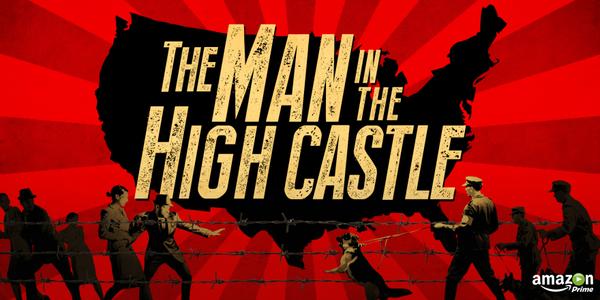We hope you all enjoyed reading The Man in the High Castle as much as we did. Here are a few takes on our thoughts, and please add yours to the discussion below!
Carly: This is truly a fascinating book. It’s tough to read at times because the racism and anti-semitism seems almost shocking, but it’s also very real in the context of the story and the world it inhabits. I think that’s part of what makes the book and the alternate history it depicts feel so vibrant — instead of exposition about how the Nazi viewpoint of an Aryan race had permeated even the Japanese world, or listing the ways in which Japanese culture had dominated even other asian cultures, Philip K Dick simply showed it. He didn’t have to say that Chinese were secondary citizens to Japanese, it’s clear in the way the pedecab drivers are referred to by racial slurs. We don’t need chapter and verse on how the Germans struck a deal with Japan allowing them to declare all Jews, even those in Japanese areas, to be under the jurisdiction of German law, they just show it by having Frank arrested, along with the implication that Tagomi signing off on Frank’s transfer should have been a formality. It helps create this idea of a culture that’s possible and yet oppressive all at once without wasting excess time setting the stage.
The part that I’ve been puzzling over is the ending with Abdenson and “The Grasshopper Lies Heavy”. There are a few ways to look at it, in my view. One, that Abdenson was able to gain insight into a parallel universe using the I Ching, just like Tagomi uses the jewelry from Childan’s shop to see the parallel universe in the park. It’s a very PKD idea that by altering your consciousness, or how you approach your reality, you can see worlds within worlds and hidden viewpoints, and that’s essentially what the practitioners of the I Ching are looking to do-they’re looking to expand and alter what and how they see the world. And the creator of the jewelry, Frank Frink, is also an I Ching believer, so Tagomi’s using the jewelry to gain this insight still connects it back to the I Ching. That’s the more mystical/fantastical/sci-fi explanation I have for the ending.
The more mundane idea I had is that Juliana Frink sees the Grasshopper book as the truth simply because it exists. There’s an undercurrent in the last portion of the book about hope — Wegener hopes Project Dandelion will be derailed before the Germans destroy everything; Frink’s jewelry brings Childan and others hope that American culture is not completely subsumed (hence why there’s such an emphasis on it having “wu”); Juliana hopes that the existence of Abdenson and people like him means that the world isn’t finished — it’s not Germany and Japan forever, because as long as people see there’s another way then fascism hasn’t won. Her epiphany is that fascism is much like Abdenson’s “high castle” — if everyone just believes it’s impossible to reach it, then you can’t touch it. But it’s all an illusion, and fascism is as delicate and vulnerable as Abdenson’s home, and the hope spreading around the world is what will kill it in the end.
Candice: It is an interesting book, but it took me a week and a half to get through it (maybe because I was reading Go Set a Watchman at the same time, and it kinda scarred me for life lol)
I just wish that the environment was more fleshed out. What does San Francisco look like at this time? Is is the same or different? What do the buildings look like? I was really curious as to what the German rockets looked like.
Also, I felt like Dick just rambled about things that had nothing to do with the story. And the subplot with Juliana and the trucker/spy going to see Abendsen was kinda dumb. Just introduce Abendsen in some other way; it was just loosely tied with Juliana being Frinks wife.
Long story short: started off interesting, but needed more fleshing out of location and people, less rambling.
Well, those are our (different) takes on the book: what did you think?
